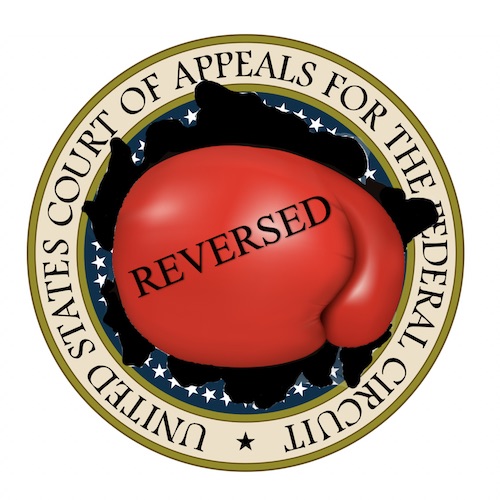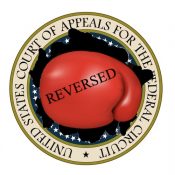“The specification fails to provide the relevant artisan with sufficient blaze marks or structural commonalities among the claimed compounds to lead her to conclude that the inventor actually possessed the claimed invention.” – CAFC
 The U.S. Court of Appeals for the Federal Circuit (CAFC) on Tuesday issued a precedential decision in Duke University v. Sandoz Inc., reversing a judgment from the U.S. District Court for the District of Colorado and finding claim 30 of U.S. Patent No. 9,579,270 invalid for lacking an adequate written description. The ruling overturns a $39 million jury verdict finding that Sandoz Inc. infringed the patent owned by Duke University and Allergan Sales, LLC, which covers the eyelash growth drug, LATISSE. The opinion was authored by Circuit Judge Stark and joined by Judges Dyk and Stoll.
The U.S. Court of Appeals for the Federal Circuit (CAFC) on Tuesday issued a precedential decision in Duke University v. Sandoz Inc., reversing a judgment from the U.S. District Court for the District of Colorado and finding claim 30 of U.S. Patent No. 9,579,270 invalid for lacking an adequate written description. The ruling overturns a $39 million jury verdict finding that Sandoz Inc. infringed the patent owned by Duke University and Allergan Sales, LLC, which covers the eyelash growth drug, LATISSE. The opinion was authored by Circuit Judge Stark and joined by Judges Dyk and Stoll.
The case reached the Federal Circuit after Allergan filed a patent infringement lawsuit against Sandoz in 2018. While Sandoz stipulated that it infringed the patent, it challenged the validity of the asserted claim. A jury found the claim not invalid and awarded Allergan $39 million, a verdict the district court ultimately upheld.
The ‘270 patent issued in 2017 and relates to methods for growing hair by topically applying a composition containing a prostaglandin F (“PGF”) analog. The dispute centered on claim 30, which, when read together with its parent claims, covers a subgenus of either 1,620 or 4,230 compounds. However, according to Sandoz, the patent specification was written so broadly that it described a “universe of billions of possible compounds,” creating a vast discrepancy between the disclosure and the claim.
On the issue of written description, the Federal Circuit agreed with Sandoz that the patent’s disclosure did not reasonably convey to a person of ordinary skill in the art that the inventors possessed the full scope of the claimed invention. The court explained that for a genus of chemical compounds, a patent must describe “either a representative number of members of the genus or structural features common to the members of the genus” with enough precision for a skilled artisan to recognize them.
The opinion said that while the claims were directed to a narrow subgenus, the specification failed to provide adequate “blaze marks” to guide a skilled artisan to it. Allergan argued the patent disclosed three common structural features, but the court found these were insufficient. The court noted the patent’s shared “hairpin structure” was a generic feature of all prostaglandins and did not distinguish the claimed compounds. The specification also did not expressly disclose a single embodiment of a compound falling within the scope of claim 30.
The court found the patent’s guidance for the chemical groups at the key C1 and Z positions to be a “maze-like path.” The specification presented a “‘laundry list’ disclosure of every possible moiety for every possible position,” with numerous branching options and the specification’s stated preferences that pointed away from the claimed invention, according to the court. For the C1 position, the patent identified five “preferred” options, none of which was the amide required by the claim, as “the ‘preferred’ and ‘more preferred’ blaze marks direct a skilled artisan away from, rather than toward, the claimed subgenus,” the court explained.
Allergan argued that because the specification described how to synthesize amides in four different synthesis schemes, it guided a skilled artisan to the invention. The court rejected this, stating that the synthesis schemes still presented a multitude of choices and did not single out the claimed compounds. Moreover, two specific examples provided in the synthesis schemes used sulphonamides or hydroxamic acid, which Allergan’s own expert admitted were not within the scope of the patent’s claims. “Following [such a] maze-like path, each step providing multiple alternative paths, is not a written description,” the court stated, quoting its decision in Regents of the University of Minnesota v. Gilead Sciences, Inc.
The CAFC also found the specification’s guidance for the Z position inadequate. While the patent identified phenyl as the most preferred aromatic group, a skilled artisan would first need to select an aromatic group from among eight initial options, and nothing in the specification directed that choice. Allergan suggested that at least 10 of the patent’s 95 example compounds used phenyl at the omega end, but the court noted that another chemical group appeared even more frequently in the examples, with fluorobenzene used in 18 of the 95 disclosed compounds.
The opinion also cited precedent that “one cannot disclose a forest in the original application, and then later pick a tree out of the forest and say ‘here is my invention.’” Instead, the specification must provide “blaze marks directing the skilled artisan to that tree,” which the ‘270 patent failed to do.
Ultimately, the Federal Circuit held that Sandoz had overcome the “doubly high burden” of overturning a jury verdict. The court concluded that no reasonable juror could have found anything other than clear and convincing evidence that claim 30 was invalid.
“The specification fails to provide the relevant artisan with sufficient blaze marks or structural commonalities among the claimed compounds to lead her to conclude that the inventor actually possessed the claimed invention,” the court concluded. The multiple branching paths of the specification were “clear on the face of the patent” and were explained in detail by Sandoz’s expert, Dr. Clayton Heathcock, and the existence of these paths was not disputed by Allergan’s expert, Dr. Allen Reitz, said the CAFC.
The Federal Circuit declined to address Sandoz’s other invalidity arguments concerning obviousness and lack of enablement, reversing the judgment based on the inadequate written description alone.
Image Source: Deposit Photos
Image ID: 10042948
Author: almoond

![[IPWatchdog Logo]](https://ipwatchdog.com/wp-content/themes/IPWatchdog%20-%202023/assets/images/temp/logo-small@2x.png)

![[Advertisement]](https://ipwatchdog.com/wp-content/uploads/2025/11/Ankar-AI-Nov-20-2025-sidebar-700x500-1.jpg)
![[Advertisement]](https://ipwatchdog.com/wp-content/uploads/2025/11/Junior-AI-Nov-25-2025-sidebar-700x500-1.jpg)
![[Advertisement]](https://ipwatchdog.com/wp-content/uploads/2025/11/Juristat-Ad-Firm-Cost-Management-Nov-18-Dec-31-2025-Animated-Varsity-Ad-final.gif)







![[Advertisement]](https://ipwatchdog.com/wp-content/uploads/2021/12/WEBINAR-336-x-280-px.png)
![[Advertisement]](https://ipwatchdog.com/wp-content/uploads/2021/12/Ad-4-The-Invent-Patent-System™.png)







Join the Discussion
No comments yet. Add my comment.
Add Comment